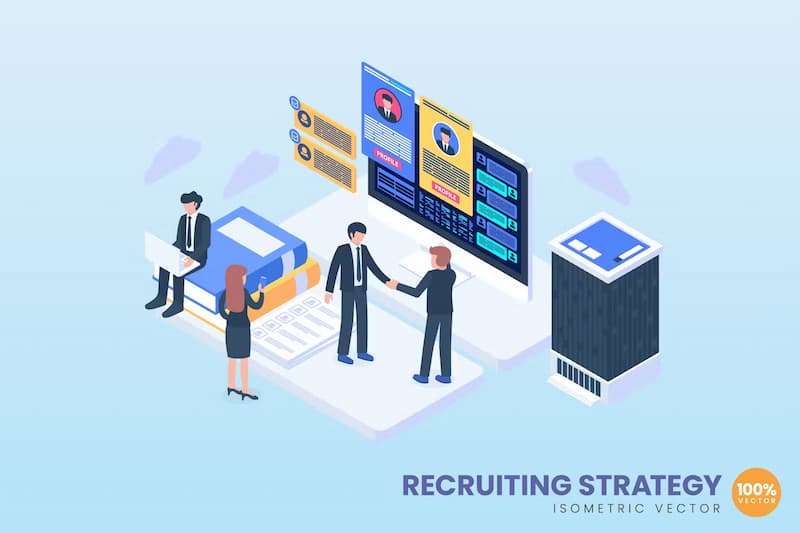How To Build Talent Pool in 7 Steps Effectively

In today’s competitive job market, companies need to have a strong talent pool to attract and retain top talent. A talent pool is a group of potential candidates who have the skills and qualifications needed to fill current or future job openings. Building a talent pool is a proactive approach to recruitment that can save time and money in the long run.
In this comprehensive guide, we will provide you with all the information you need to create an effective talent pool. From defining your hiring needs to sourcing candidates and nurturing relationships, this guide covers it all.
How a Company Can Build Talent Pool Effectively
Building a talent pool requires a strategic approach that involves several steps. Here’s an overview of how to build a talent pool effectively:
- Understanding the importance of a talent pool
- Defining your hiring needs
- Sourcing candidates for your talent pool
- Screening and assessing candidates
- Nurturing relationships with candidates
- Managing your talent pool
- Making job offers and onboarding
Let’s dive into each of these steps in more detail.
1. Understanding the Importance of a Talent Pool
A talent pool is like having a secret stash of potential superstars for your company. These are individuals who possess the skills and qualifications to fill your current or future job openings. They might have applied before, been recommended by your current rockstar employees, or smartly sought out through proactive recruitment. So, why is having a talent pool so crucial for companies?
A talent pool is a group of potential candidates who have the skills and qualifications needed to fill current or future job openings. These candidates may have applied for a position in the past, been referred by current employees, or identified through proactive recruitment efforts.
Having a talent pool is important for companies for several reasons:
- It allows companies to fill job openings quickly and efficiently.
- It reduces recruitment costs by eliminating the need to advertise job openings and screen large numbers of applicants.
- It helps companies to build a strong employer brand by creating a positive candidate experience.
- It enables companies to identify and nurture top talent, even if there are no current job openings.
Building a talent pool has several benefits for companies, including:
- Improved quality of hires
- Reduced time-to-hire
- Lower recruitment costs
- Increased retention rates
- Enhanced employer brand
- Access to a pipeline of top talent
2. Defining Your Hiring Needs
Before you can start building your talent pool, you need to define your hiring needs. This involves identifying the roles you need to fill, determining the skills and qualifications required for each role, and creating job descriptions and candidate profiles.
The first step in defining your hiring needs is to identify the roles you need to fill. This may involve conducting a workforce analysis to determine the current and future needs of your organization.
Once you have identified the roles you need to fill, you need to determine the skills and qualifications required for each role. This may involve consulting with hiring managers and subject matter experts to identify the key competencies needed for success in each role.
Once you have determined the skills and qualifications required for each role, you can create job descriptions and candidate profiles. These documents should clearly outline the responsibilities of the role, the required skills and qualifications, and any other relevant information.
3. Sourcing Candidates for Your Talent Pool
Once you have defined your hiring needs, you can start sourcing candidates for your talent pool. This involves using a combination of internal and external recruitment strategies, leveraging social media and online job boards, and building relationships with industry associations and educational institutions.
Internal recruitment strategies involve sourcing candidates from within your organization. This may involve posting job openings internally, promoting from within, or identifying high-potential employees for future roles.
External recruitment strategies involve sourcing candidates from outside your organization. This may involve posting job openings on online job boards, leveraging social media platforms like LinkedIn, or partnering with recruitment agencies.
Social media platforms like LinkedIn and online job boards like Indeed can be powerful tools for sourcing candidates. These platforms allow you to target specific demographics and reach a large audience of potential candidates.
Building relationships with industry associations and educational institutions can help you to identify top talent in your field. This may involve attending industry events, sponsoring educational programs, or partnering with universities to offer internships and co-op programs.
4. Screening and Assessing Candidates
Once you have sourced candidates for your talent pool, you need to screen and assess them to determine their suitability for your organization. This involves developing a screening process, conducting initial interviews, administering assessments and tests, and checking references and conducting background checks.
Developing a screening process involves creating a set of criteria that candidates must meet in order to be considered for a role. This may involve reviewing resumes and cover letters, conducting phone screens, or using pre-employment assessments.
Conducting initial interviews allows you to get to know candidates on a more personal level and assess their fit with your organization. This may involve conducting phone or video interviews, or inviting candidates for in-person interviews.
Administering assessments and tests can help you to assess a candidate’s skills and competencies. This may involve using cognitive or personality assessments, or administering skills tests.
Checking references and conducting background checks can help you to verify a candidate’s employment history and ensure that they have a clean criminal record. This is an important step in ensuring that you are hiring the right candidate for your organization.
5. Nurturing Relationships with Candidates
Once you have screened and assessed candidates for your talent pool, you need to nurture relationships with them to keep them engaged and interested in your organization. This involves creating a candidate engagement plan, providing regular communication and updates, offering opportunities for professional development and networking, and building a positive employer brand.
Creating a candidate engagement plan involves developing a set of strategies for keeping candidates engaged and interested in your organization. This may involve sending regular email updates, inviting candidates to events, or offering opportunities for professional development.
Providing regular communication and updates can help you to keep candidates engaged and informed about your organization. This may involve sending regular email updates, inviting candidates to events, or providing them with information about your organization’s culture and values.
Offering opportunities for professional development and networking can help you to build relationships with candidates and demonstrate your commitment to their career growth. This may involve offering training programs, mentoring opportunities, or networking events.
Building a positive employer brand involves creating a strong reputation as an employer of choice. This may involve highlighting your organization’s culture and values, showcasing your employee benefits and perks, or sharing testimonials from current employees.
6. Managing Your Talent Pool
Managing your talent pool involves tracking and organizing candidate information, developing a talent pipeline, evaluating and prioritizing candidates, and maintaining relationships with candidates who are not currently a fit.
Tracking and organizing candidate information involves creating a database or spreadsheet to keep track of candidate information. This may include their contact information, resume, cover letter, and any notes from previous interactions.
Developing a talent pipeline involves identifying candidates who are a good fit for your organization but may not be ready to apply for a role yet. This may involve keeping in touch with candidates through regular communication and updates, or inviting them to events or networking opportunities.
Evaluating and prioritizing candidates involves assessing their fit with your organization and determining their potential for future roles. This may involve using a scoring system or ranking candidates based on their skills and qualifications.
Maintaining relationships with candidates who are not currently a fit involves keeping in touch with them and providing them with updates about your organization. This can help to keep them engaged and interested in your organization, even if there are no current job openings.
7. Making Job Offers and Onboarding
Once you have identified top candidates for your organization, you need to make job offers and onboard them effectively. This involves extending job offers to top candidates, negotiating compensation and benefits, developing an onboarding plan, and ensuring a smooth transition for new hires.
Extending job offers to top candidates involves making a formal offer of employment and outlining the terms and conditions of the role. This may involve negotiating salary and benefits, and providing candidates with a formal offer letter.
Negotiating compensation and benefits involves determining the appropriate salary and benefits package for the role. This may involve researching industry standards and consulting with HR professionals or hiring managers.
Developing an onboarding plan involves creating a structured program for new hires to help them acclimate to your organization. This may involve providing them with an orientation session, assigning a mentor or buddy, or providing them with training and development opportunities.
Ensuring a smooth transition for new hires involves providing them with the support they need to be successful in their new role. This may involve assigning them a mentor or buddy, providing them with regular feedback and coaching, or offering them opportunities for professional development.
Building a talent pool is a proactive approach to recruitment that can save time and money in the long run. By following the steps outlined in this guide, you can create an effective talent pool that will help you to attract and retain top talent. Remember to define your hiring needs, source candidates for your talent pool, screen and assess candidates, nurture relationships with candidates, manage your talent pool, and make job offers and onboard effectively. With these strategies in place, you can build a strong talent pool that will help your organization to thrive.
However, if you find the task of building a talent pool daunting or time-consuming, consider partnering with a professional outsourcing company in Jakarta like RecruitFirst. Our expertise in talent acquisition and management can provide you with a ready-made talent pool of qualified candidates, saving you valuable resources and accelerating your hiring process.
With RecruitFirst as your ally, you can focus on what truly matters – growing your business and achieving success. Take the leap and reach out to RecruitFirst today to see how we can elevate your recruitment efforts and help your organization thrive.





